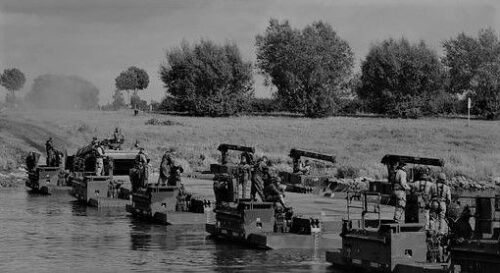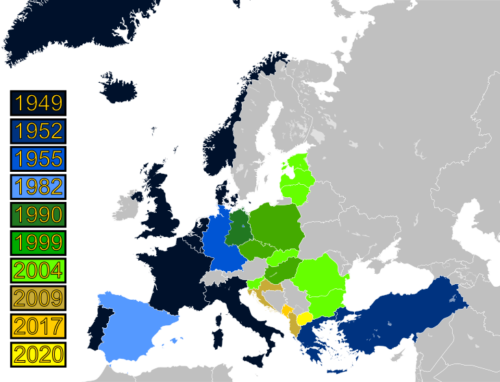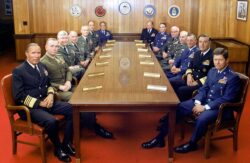Publications
Concepts for Army Transformation: A Briefing for the Transformation Task Force
Bigger Budgets Will Not Cure the Pentagon’s Ills
Can the United States Spend Less on Defense? — Toward a Smaller, More Efficient, and More Relevant US Military
The Armed Forces: “used too much and supported too little”?
Kosovo and the Just War Tradition
Wheels or Tracks? On the “Lightness” of Military Expeditions
U.S. Military-Strategic Ambitions — Expanding to Fill the post-Soviet Vacuum
Europe’s Armed Forces at the Millennium: A Case Study of Change in France, the United Kingdom, and Germany
Evaluating the Post-Cold War Policy of the United States
Don’t Court Disaster In Iraq
Slovenian Security in the European Perspective
Interventionism Reconsidered: Reconciling Military Action With Political Stability
The Coming Transformation of the Muslim World
Alleged ‘Carrier Gap’ is Out to Sea
The Readiness Crisis of the U.S. Air Force: A Review and Diagnosis
Military Strategy Under Review
“’Environment shaping’, the other ascendant element in the new strategy, prescribes a more active peacetime use of military power to influence the course of strategic affairs. It encompasses not only traditional deterrence, but also the goals of discouraging other nations from even trying to compete militarily with the U.S. and of ‘preventing the emergence of a hostile regional coalition or hegemon’ Key to achieving this novel “preemptory” deterrence is the maintenance of a robust U.S. regional presence, a daunting degree of U.S. military superiority, and a technological edge that no prospective competitor could hope to diminish.”
Nato Expansion: Costs and Implications
Maneuver Warfare Principles and Terms
by Carl Conetta, PDA Briefing Memo, 12 March 1998. ⇒ HTML
A brief on the terminology and principles of maneuver warfare as distinct from attrition warfare.

Defense Sufficiency and Cooperation: A US Military Posture for the post-Cold War Era
Dueling with Uncertainty: the New Logic of American Military Planning

Wanting Leadership: Public Opinion on Defense Spending
Future Tense — An Assessment of the Report of the National Defense Panel
From the QDR to the NDP — A Summary of QDR Policy Issues Since May 1997 and the Likely Content of the NDP Report
America’s New Deal With Europe: NATO Primacy and Double Expansion

General Trainor’s Korean War Scenario is Only Half the Story
Backwards Into the Future: How the Quadrennial Defense Review Prepares America for the Wrong Century
US Defense Posture in Global Context: a framework for evaluating the Quadrennial Defense Review
Asia Pacific Tilts to West: Limit Offensive Weaponry, Boost Arms Control
by Carl Conetta and Charles Knight, commentary originally published in Defense News, 31 March – 06 April 1997.
➪ HTML
Examines the pattern of military spending in the Asia Pacific region since the Cold War and makes recommendations for U.S. policy. Based on data and analysis from Post-Cold War US Military Expenditure in the Context of World Spending Trends.
Framework for Constructing a “New Era” Alternative to the Bottom-Up Review
➪ HTML
Based on the strategic objective of a core area coalition defense (i.e. Persian Gulf, Korea, and Europe) this memo takes the reader step by step through the logic of force sizing and structuring and modernization requirements to arrive at a robust and consistent alternative to the Bottom-Up Review force posture.
Post-Cold War US Military Expenditure in the Context of World Spending Trends
by Carl Conetta and Charles Knight, PDA Briefing Memo #10, January 1997.
➪ HTML
➪ summary
Based on a review of official world military spending data, this study finds evidence that the strategic position of the US and its allies has improved immensely relative to the potential threat states. It also looks at regional trends and offers a perspective on the new and ambitious regional military strategy of the U.S.
The Development of America’s post-Cold War Military Posture: A Critical Appraisal
By Carl Conetta, 07 November 1996.
➪ HTML
➪ PDF
This article outlines the factors influencing and distorting military planning (with special attention to the 1992-1996 period.)
 In the early years of the post-Cold War era, the US defense establishment set out to formulate a new military posture. This was supposed to reflect the new strategic environment and pursue the opportunities afforded by advances in information technology. The result, however, was a “new” posture closely resembling the old, writ somewhat smaller. It was to be progressively bolstered by cutting-edge technology inputs. However, while remarkably expensive, these inputs would only partially fulfill their promise, while exhibiting varying degrees of reliability and sustainability. Soon the USA would be spending as much and more inflation-adjusted dollars on its armed forces as during the Cold War. Also driving requirements and budgets upward would be the adoption of new strategic goals, roles, and missions exceeding those of the Cold War period.
In the early years of the post-Cold War era, the US defense establishment set out to formulate a new military posture. This was supposed to reflect the new strategic environment and pursue the opportunities afforded by advances in information technology. The result, however, was a “new” posture closely resembling the old, writ somewhat smaller. It was to be progressively bolstered by cutting-edge technology inputs. However, while remarkably expensive, these inputs would only partially fulfill their promise, while exhibiting varying degrees of reliability and sustainability. Soon the USA would be spending as much and more inflation-adjusted dollars on its armed forces as during the Cold War. Also driving requirements and budgets upward would be the adoption of new strategic goals, roles, and missions exceeding those of the Cold War period.
Over subsequent decades, the tension between purported military requirements and resources constraints would grow acute, while the armed forces found themselves over-extended worldwide and mired in seemingly endless wars, despite their presumed (and costly) advantages. How did US defense policy come to this point? The Development of America’s post-Cold War Military Posture shows how dysfunctional planning assumptions and processes can easily lead to dysfunctional policy.

